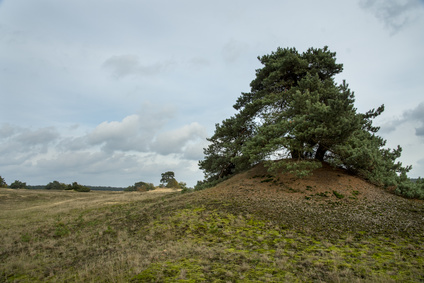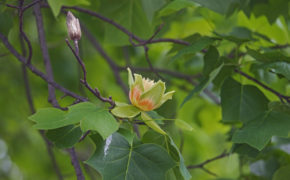
Get a quick no obligation quote It’s free and will only take a jiffy!
When Should I Prune my Scots Pine Tree?
When should you prune a Scots pine tree? What is the importance of Scots pine tree pruning? And what are the most common Scots pine tree diseases? For everything you need to know, read on…
Scots pine is an evergreen conifer that is native to northern Europe. It is one of just three conifers native to the UK.
Of the Latin Pinus sylvestris, the Scots pine is known to grow up to 35 metres in height and has a long lifespan of up to 700 years. You’ll know this tree by its orange-brown coloured upper trunk and branches which grow to form an eye-catching shape when mature. It’s widely found in heathland and valued for its timber.
Why prune a Scots pine tree?
Once mature, the Scots pine needs little attention other than to remove dead or diseased branches. You may find that the lower or internal branches of this tree sometimes die during the ageing process. It’s good practice to remove these branches just past the branch collar, i.e. the thicker area where the branch meets the trunk.
It’s also good to balance the tree with a little light pruning. Scots pine branches grow in layers known as whorls. If you spot any dead branches in the lower whorl then you should remove them together with the others in the same layer so that the tree maintains a balanced appearance and strength.
When the tree is younger, if the central leader is broken, you’ll need to replace it so that it can form a strong trunk. This is done by pruning the stub back to 8 to 12 inches from the uppermost whorl. Also, to give the central leader the best possible chance of becoming a good strong trunk, it is a good idea to keep the side branches short around it so that it has an unobstructed run as it grows.
Pruning stimulates new branches to grow and also promotes a more compact, attractive appearance that is easier to maintain.
When is the best time for Scots pine tree pruning?
Never prune a pine tree during the growing season, i.e. late spring through to summer. During this time the bark is vulnerable to damage and fungal infection. Autumn is not a good time for branch trimming either, because fresh buds are formed at each cut and these are unlikely to survive the forthcoming frosts.
The best time for Scots pine tree pruning is in the spring, although dead or diseased branch removal can be undertaken at any time of the year.
If you are looking to create a compact tree, pinch back the new growth tips in the spring. Do this by hand, because cutting them with a blade will cause them to turn brown. Never cut into the woody part of a branch because this will stunt the branch’s growth which will lead to a stunted appearance.
What to look for when pruning a Scots pine tree
The Scots pine can be susceptible to Dothistroma needle blight, also known as red band needle blight. It is caused by the fungus Dothistroma septosporum which has been found throughout the UK on various conifer and pine species. The condition leads to defoliation which can reoccur year after year leading to a weakening of the tree and eventually, in some cases, death. Look out for yellow and tan spots and bands on needles which turn red. The ends of the needs gradually turn a red-brown colour before shedding and leaving branches with a lion’s tail appearance.
Other threats include root and butt rot; needle cast disease and pine stem rust which leads to distorted branches and cankers. Common pests include the pine tree lappet moth (Dendrolimus pini) which causes significant defoliation.
Tree Preservation Orders
You should never proceed with any tree work without first ascertaining whether there is a Tree Preservation Order (TPO) in place. Where this is the case you will need to apply to the local authority for permission to undertake works and this could take up to eight weeks to come through. In addition, if the tree is situated in a conservation area, you will need permission before undertaking works of any kind.
The importance of Scots pine tree pruning expertise
If you are keen to make sure your Scots pine tree is properly taken care of then your wisest move is to engage the services of a suitably qualified and experienced tree surgeon.
Tree surgeons go through intense training in order to achieve their qualifications. They are aware of exactly how to undertake Scots pine tree pruning in the right way at the right time, and will be able to spot diseases and pest infestations and deal with them effectively in order to protect the long term health of the tree.
When choosing a tree surgeon, request checkable references and certificates to be certain that they actually possess the qualifications they claim to have. You should also ask to see insurance documents so you know you are covered for the work being undertaken. In addition, where you can, try to select a tree surgeon with Trading Standards and local authority approval for a guarantee of the highest possible quality and value for money.
If you have a Scots pine tree that requires pruning, why not get in touch with T.H. Tree Services? As fully qualified and extensively experienced Trading Standards and local authority approved tree surgeons, we can offer specialist knowledge across all aspects of Scots pine tree pruning. For a free, no-obligation quotation, contact our helpful experts on 01268 642814 or get in touch here.
Had a fallen tree in the early hours of Monday morning, called for quote and the team had it cleared on the same day. Really good communication when the lads were onsite and did a great job. Lots of pride in their work shown with the thorough clear up. Would thoroughly recommend.
Thank you Stuart for your kind review. We were glad to be able to help you with your fallen tree. If there's anything else you need in the future, please don't hesitate to get in touch.








